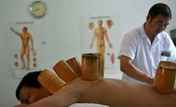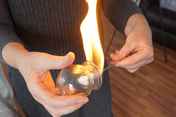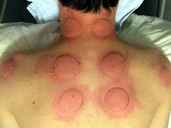Course Content
-
0 / 4
Introduction
-
An Overview for Bodywork Professionals7:44

-
An Overview of the power of cupping5:04

-
Evaluation
-
Practitioner Cautions and General Information
-
-
0 / 10
What Is Cupping
-
History of Cupping

-
First evidence of Cupping

-
Worldwide use of cupping16:45

-
Quiz
-
Cupping Today - Research and Current Practice
-
Quiz
-
Cupping Overview

-
Categories of Cupping

-
Quiz
-
Cupping for Self Care12:05

-
-
0 / 9
Types of Cups
-
TYPES OF CUPS
-
Quiz
-
Glass Cups
-
Silicone Cups0:35

-
Quiz
-
Plastic Cups1:46

-
Quiz
-
Size of Cups
-
Quiz
-
-
0 / 6
The Cupping Method
-
Depths of Cupping – determining the amount of suction needed2:28

-
Quiz
-
Three Main Cupping Methods7:04

-
Quiz
-
Other Types of Cupping8:31
-
Practice time
-
-
0 / 7
How Does Cupping Work?
-
How Does Cupping Work?
-
Quiz
-
Cupping marks1:34

-
Quiz
-
Planning for your treatment
-
Indications for Cupping
-
Quiz
-
-
0 / 5
Cautions and Standards
-
Contraindications for Cupping
-
Quiz
-
Cautions around Bruising and Blisters
-
Cleaning and Disinfection
-
Endangerment Zones
-
-
0 / 2
Practice Time
-
Practice Time

-
Final thoughts
-
-
0 / 6
Body Areas for Cupping
-
BACK
-
ABDOMEN
-
CHEST/LUNGS/NECK
-
LIMBS31:56
-
FACE and NECK
-
Specific treatment protocols
-
-
0 / 3
Certificate Notes and Other
-
get your certificate here!

-
PDF powerpoint notes
-
Cupping Consent Form
-
Practitioner Cautions and General Information
Before you offer cupping to your clients, you should make sure to receive the proper training, and practice on at least 5 people.
It takes time and practice to administer any modality correctly.
Make sure to check with your licensing and registration board to confirm if cupping is within your scope of practice or if there are any restrictions. Some boards only accept plastic and silicone cups, some accept fire cupping with glass cups. It is also important that you check with your licensing body to utilize proper cleaning procedures. It is important to understand the levels of cleaning and sterilization, and more information is available from the CDC. Refer to page 10, and page 71
Some jurisdictions restrict practitioner's use of certain types of tools, especially if they use any kind of mechanical device. Cupping is a simple yet powerful form of alternative healing. If performed correctly it can be a wonderful form of complementary therapy. If done incorrectly it can at the least be ineffective or, worse, it can cause negative results. Make sure to receive proper training before using it on your clients.
CE certificates will be issued no less than 30 days after the course has been purchased, and only once we are notified that the course has been completed.
In order to complete this course, you will need a set of cups to practice with. We recommend a set of 8 silicone cups to start, as you practice you may find that you need more. Typically we recommend you have at least four sizes of cups, two in each size. A set of four cups is also a good starting point. Each person will have their preferences, so this is merely a suggestion. Please let us know if you have any questions.
You can purchase cupping supplies on www.meridiancarecentre.com
Use the code PA2M864TJ64X and receive 15% off your purchases.

